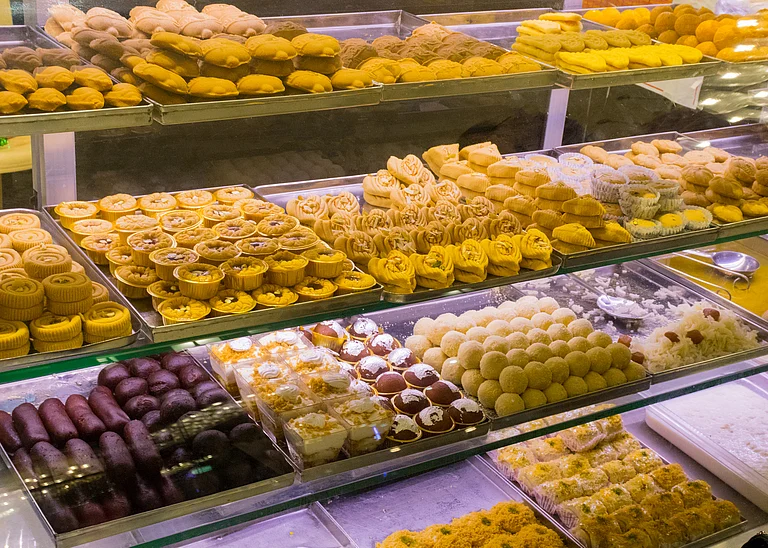A subtle yet profound change is sweeping across Indian households that share their space with pets. The shift is in the way people view their pets, not just as companions, but as members of their family.
If owning a pet was previously some functional affair, with food thrown together from the family’s meals and a visit to the veterinarian scheduled only when absolutely necessary, then times have changed drastically.
Today, pets are cherished as one of the family; they are loved, and pampered, and have parents – ‘paw-parents’ to be precise – who treat them as they would their children. According to a recent report by Redseer Strategy Consultants, this change in perspective is fuelling an industry transformation as pet care spending surges across India.
From Owners To ‘Paw-Parents’
In his article, Pet Parenting In India: Redefining The Future Of Petcare, Jasbir S Juneja of Redseer notes that prior to the pandemic, most pet owners had a more functional approach to pet care. It essentially means that they were spending less time with their pets, opting for home-cooked food, and visiting the vet occasionally.
However, during lockdowns, when everybody was locked in at home, people found themselves spending more time with their pets. These long days and nights together intensified the depth of the bond that could exist between humans and their animals, Juneja wrote in the report.
After this shift, these pets weren’t just there idly roaming in the home, rather they became the sources of comfort and connection in otherwise isolated times. This connection led to a surge in spending as pet owners explored options to improve their pets’ quality of life, the report further says.
In another Redseer report titled, From Kibble To Care: Understanding India’s Evolving Petcare Market, Juneja wrote that the pet population in India saw a noticeable surge during the Covid-19 pandemic, with many households adopting stray animals or rescuing pets. This shift led to a surge in the pet care market as new pet parents began spending more on pet upkeep, health, and their overall well-being.
For many, taking their dog to a spa or investing in specialised food is now no longer an extravagance, but an expectation. And while this growing care for pets has its roots in love, it is also a fast-growing industry, one that’s getting increasingly sophisticated to meet the demands of discerning ‘paw-parents’.
‘Paw-Parents’ And Their Spending Habits
Despite the shared bond they feel, ‘paw-parents’ across India vary widely in their needs and spending habits. The Redseer report segments pet parents into four main groups based on their buying behaviours, which reflects their unique approach to caring for their pets.
The first are the ‘Value Buyers’, who are often located in smaller cities. These pet parents keep costs low without sacrificing basic quality. They are likely to feed their pets with home-cooked meals and stick to local grooming services. Offline stores are their primary shopping channels, and they seek affordable options rather than luxury brands.
The next are the ‘Brand-Loyal Discount Seekers’, primarily based in metro areas and Tier-I cities. These ‘paw-parents’ are dedicated to the brands they trust, but also actively search for discounts at local stores. They value deals and expect their favourite brands to be available easily at nearby shops and clinics.
Then there are the ‘Convenience-First Buyers’, often young professionals with limited time on their hands. They prioritise ease and speed, relying on branded pet food and frequent grooming and training services. E-commerce platforms are their go-to choice, which allows them to order high-quality products and services on demand.
Finally, there is the ‘Experience-Oriented Shoppers’ who constitute high-income couples or small families in metropolitan areas. For them, pet care is about wellness and experience. They seek personalised products, vet teleconsultations, and luxurious grooming services. This group frequently bends online convenience with offline along with in-store browsing for premium products and services.
What Is The Cost Of This Love?
Pet care is not just about love; it’s also about budgets.
Redseer’s findings show that Indian pet parents spend approximately Rs 50,000 a year on pet care, which can account for 5-8 per cent of the household income. The largest expenses include food healthcare, grooming, and miscellaneous services, each reflecting the growing variety of choices available in the market.
Food, which takes up around 16 per cent of pet care spending, is increasingly leaning toward packaged products. Veterinarian recommendations often encourage pet parents to adopt packaged foods for nutritional benefits, and convenience is a driving factor.
Healthcare is another major expenditure with around Rs 14,000 a year dedicated to routine vaccination, preventive care, and vet consultations. It makes up about 30 per cent of the annual pet care expenses, underscoring a shift towards regular wellness checks rather than reactive visits only when necessary.
Followed closely behind this is the ‘Grooming’ expenses which account for 25 per cent of service-related spending. Most pet parents, according to the Redseer report, show dissatisfaction with service standards, citing untrained staff and poor quality, which reflects a gap for businesses that can provide reliable grooming services. Miscellaneous expenses, such as pet ‘day care’ and accessories, are also on the rise, amounting to approximately Rs 15,000 annually.
Where Is The Pet Care Market?
Despite a rise in digital shopping or e-commerce platforms, offline sales still dominate the Indian pet care market, with around 84-85 per cent of purchases occurring at local vet clinics, pet stores, and service providers. However, online platforms are making inroads, especially among younger pet parents who seek convenience and faster delivery options. Subscription models have also seen particular growth, with many ‘paw-parents’ appreciating the ease of recurring deliveries for essentials, such as food and grooming supplies.


















